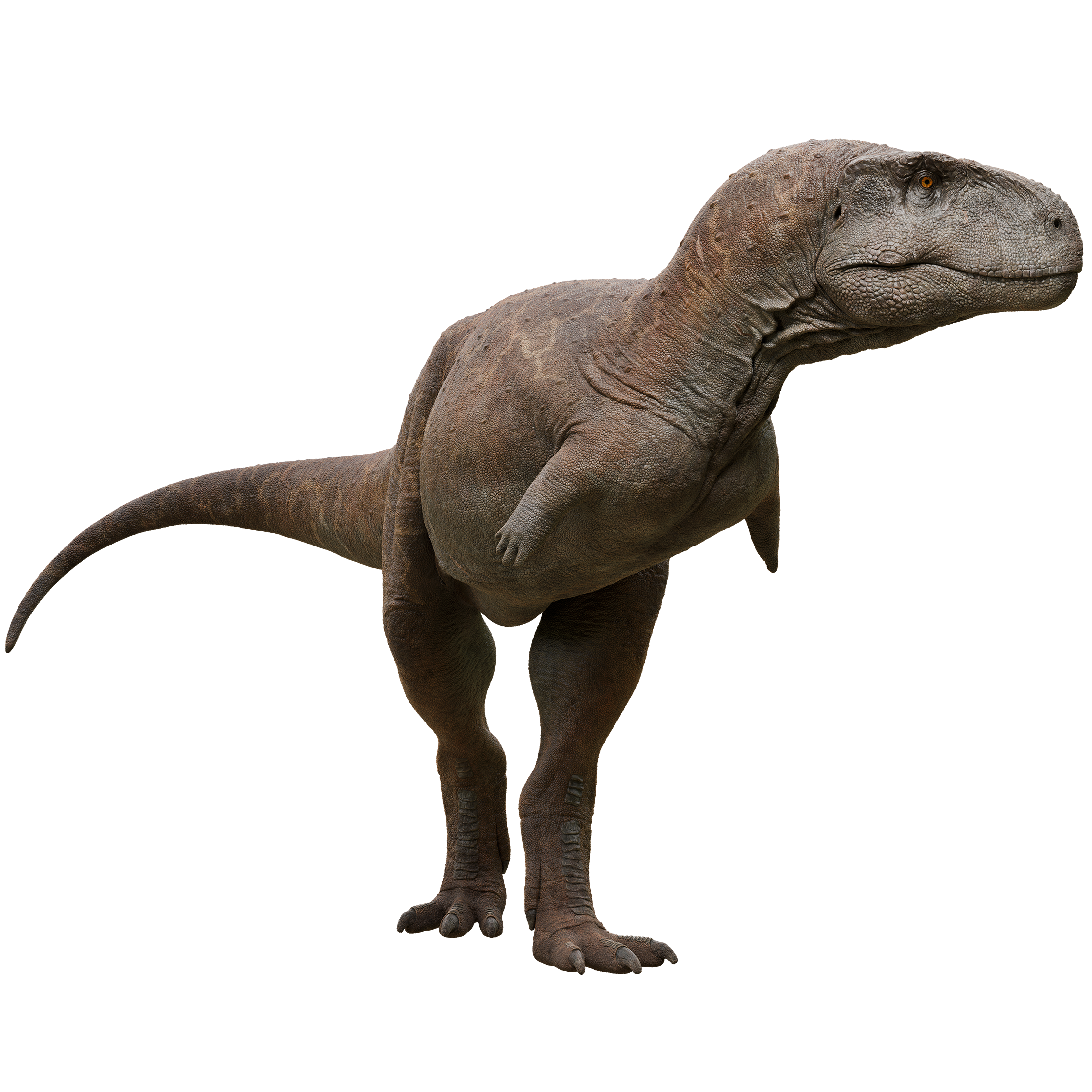The Dragon of Normandy
Discovered in Normandy, France, Caletodraco is one of only a few abelisaurs known outside of the Southern Hemisphere, and curiously, it is not closely related to the others, revealing a complex history of migration between Europe and Africa during the Cretaceous.
Overview: Abelisaurs were a group of odd theropods that were highly successful in the southern hemisphere during the Cretaceous Period. However, a small handful of abelisaurs are known Europe, and one such abelisaur was Caletodraco, discovered in 2021 in Normandy, France and named in 2024. Curiously, it is not closely related to the other European abelisaurs nor did it live particularly temporally close to them, suggesting that France was the site of multiple faunal incursions from the Southern Hemisphere throughout the Cretaceous.
Discovery: Caletodraco cottardi was discovered in the Chalk of the Pays de Caux in Normandy, France, dating to the early Cenomanian Age of the Late Cretaceous, about 100-95 million years ago. It’s bones, a sacrum, incomplete ilia, the first caudal (tail) vertebra, and various other poorly preserved bones (possibly including some ribs), as well a tooth which may belong to the animal, were excavated between 2021 and 2023 and described and named in 2024 by Eric Bufftaut and coauthors. Its name means “Caleti Dragon” in reference to a Celtic tribe, the Caleti, who once lived in the region the fossils were found. The species name honors Nicolas Cottard, who discovered, excavated, and donated the specimen to the museum where it was reposited and described.
Evolution and Physical Description: Caletodraco was a member of the theropod family Abelisauridae. These animals are part of the clade Ceratosauria and branched off from other theropods early in the Jurassic. Abelisaurs were mainly southern hemisphere theropods and developed a distinctive look of their own. They had proportionally very short and deep skulls, with upward curving jaws that gave them a sort of “smile”. Their skulls were typically decorated with small horns or other rugose ornamentation, and they had extremely short, possibly vestigial, arms that made the arms of tyrannosaurids look long by comparison. Caletodraco likely possessed all of these features, though the incompleteness of its only known specimen makes a specific physical description difficult. It was thought to be roughly the same size as the Argentine abelisaur Skorpiovenator, suggesting a length of about 6 m (20 ft) and a weight of about 891 kilograms (1,964 lb).
Within Abelisauridae, Caletodraco was found to belong to the clade Furileusauria, which also includes the famous Carnotaurus. Besides Caletodraco, this clade is only known from South America, making Caletodraco’s presence in France something of a curiosity. Even more curiously, the only other two named abelisaurs from Europe (also France), Tarascosaurus and Arcovenator do not appear to be close relatives of Caletodraco, and they are separated in time by many millions of years. Tarascosaurus was a basal abelisaurid which lived in France 80-70 million years ago and Arcovenator was a relative of the Madagascan Majungasaurus and the Indian Rajasaurus and lived in France 76-72 million years ago. The fact that none of these French abelisaurs are closely related suggests that France was the center of multiple faunal incursions from the Southern Hemisphere during the Cretaceous, giving France a fauna somewhat unique from other Late Cretaceous Northern Hemisphere ecosystems.
Ecology: The Chalk of the Pays de Caux of Normandy in which Caletodraco was discovered represents a warm shallow marine environment which abundant chalk-forming photosynthetic algae. Caletodraco would have lived on a nearby landmass and its remains likely washed out to sea where it was buried. Unfortunately, because of this, we know little about its actual habitat 100-95 million years ago. At the time Europe was still highly fragmented, still mostly a collection of large and small islands in the Tethys Sea. It is possible that Caletodraco lived on an island. European herbivorous dinosaurs at the time would have included iguanodonts among other clades, and these may have been present in Caletodraco’s habitat as well.
Extinction and Legacy: What exactly caused the extinction of Caletodraco is unknown, but it wasn’t a mass extinction. More likely, it was simply replaced in the never-ending grind of evolution and ecological change. Similar abelisaurs continued on until the end of the Age of Dinosaurs 66 million years ago. The remains of Caletodraco are housed in the Natural History Museum of Le Havre in Le Havre, France.
Caletodrako FAQ
Caletodraco size / How big was Caletodraco?
See weight, height, and length.
Caletodraco weight / How much did Caletodraco weigh?
Caletodraco probably weighed about 891 kilograms (1,964 lb), based on the similarly sized Skorpiovenator.
Caletodraco Height / How tall was Caletodraco
Caletodraco probably stood around 2.06 m (6.76 ft) tall.
How long was Caletodraco?
Caletodraco probably grew about 6 m (20 ft) in length, based on the similarly sized Skorpiovenator.
What did Caletodraco eat?
Caletodraco ate meat, specifically other dinosaurs.
What is Caletodraco closest living relative?
Like all dinosaurs, the closest relatives of Caletodraco are the only surviving lineage of dinosaurs today, the birds. Crocodilians, while not dinosaurs themselves, are also more distant cousins of dinosaurs.
Caletodraco family members / Caletodraco family / What kind of dinosaur was Caletodraco?
Caletodraco was a theropod (two-legged, mainly carnivorous dinosaurs) in the family Abelisauridae, making it a close relative of the later and more famous Carnotaurus. Abelisaurs were part of the larger clade Ceratosauria which also included Ceratosaurus.
Where did Caletodraco live? / Where was Caletodraco found?
Caletodraco lived in what is now Normandy, France.
When did Caletodraco live?
Caletodraco lived about 100-95 million years ago at the beginning of the Late Cretaceous Period.
What does Caletodraco mean? / Caletodraco name meaning
Caletodraco means “Caleti Dragon”.

